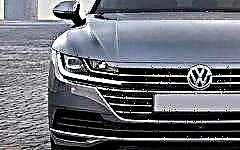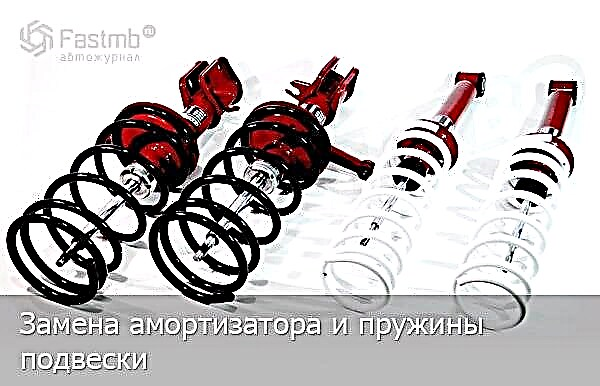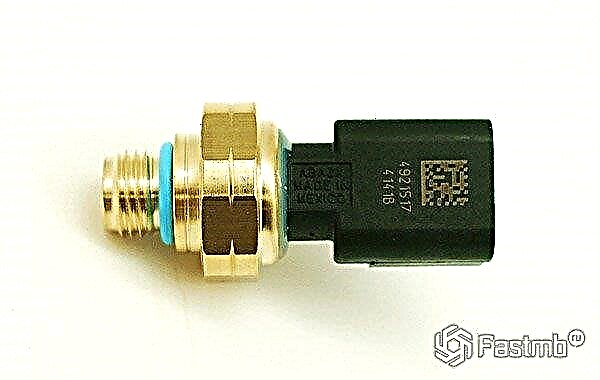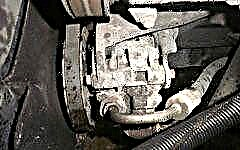

The content of the article:
- History of appearance
- Device
- Scheme
- Principle of operation
- Pros and cons
- Major breakdowns
- Parts and repair price
Power steering or power steering of a car is a set of parts and mechanisms that helps to create additional force due to hydraulic pressure when the driver turns the steering wheel. Today, the hydraulic amplifier is considered the most common type of amplifier. Depending on the manufacturer, the power steering device can be very different, both with its own drive and drive from the engine crankshaft.
How did the power steering of a car appear?

The very first power steering, which is most often remembered by experts, appeared back in 1823, invented by Robert Gürney. For the first time, they started talking about the hydraulic power steering in the USSR back in 1950, and in 1958 it was first installed on a high-class car (premium by modern standards) ZIL-111. Most often, this car was used to transport the first persons of the state of the USSR, the comfort had to be appropriate.
Today, the power steering can be found in any car, even the simplest basic configuration. In some cars, electric power steering or hydroelectric power steering can be installed, but the usual power steering remains the most common. As the cars and their structure changed, the engineers were finalizing the power steering, its structure and characteristics. Let's consider in more detail the device and the principle of operation of the mechanism.
How the power steering works

Today, it is almost impossible to imagine a car that does not have power steering. From the very name it becomes clear that the basis of the entire mechanism is hydraulics, due to which the pressure changes. There are no special requirements for this system, it is installed on a steering gear of any type, in cars, as a rule, it is a rack and pinion gear. Often, the list of parts for such an amplifier includes an oil pump, a fluid reservoir, a spool valve, connecting mechanisms and hoses, as well as a hydraulic cylinder. Now let's take a look at each detail separately.

The very heart of the entire power steering of a car is considered hydraulic pump (power steering pump)... The main task of the pump is to maintain a constant pressure in the system at the time of operation, and also circulate fluid through the system. As a rule, the hydraulic pump is installed next to the cylinder block, since in 99% of cases it is driven by a belt from the engine crankshaft. It is difficult to describe what the pump looks like, since each car has its own configuration.
Most often, vane pumps are part of the power steering, since they have high efficiency and are very wear-resistant. The pump body is metal or silumin, and a rotor with blades is installed inside. Due to such a device, the blades supply the working fluid under pressure to the distributor and then to the main hydraulic cylinder of the system.

As already mentioned, the hydraulic pump is driven by a pulley connected to the crankshaft by means of a belt. This is the main reason why the pressure and the quality of the pump is directly dependent on the engine. If the pressure is excessive, then there is a special bypass valve for this. According to various sources, the average system pressure is from 100 to 150 bar.
Experts distinguish two main types of pumps - adjustable and non-adjustable. The variable pump can change and maintain the pressure of the system due to the productive part, but the unregulated pump changes the pressure only due to the pressure reducing valve. If everything is clear with the adjustable one, then the device of the second pump is different, the pressure reducing valve is a choke, hydraulic or pneumatic. The valve works automatically to control the oil level and pressure.

Tank it is considered the basis of the mechanism, since it contains liquid. The device of the power steering reservoir itself is not simple, as a rule, it contains an element for filtering the liquid, a dipstick for the liquid (oil) level, as well as holes for the intake and supply of liquid. Due to the liquid, the rubbing mechanisms are lubricated. The dipstick allows you to check the presence of liquid and its level in the tank, although the level can also be checked visually, since the tank is often made of white translucent plastic.
To make it more convenient to understand the level of the liquid, special marks are applied to the dipstick with the inscriptions minimum and maximum. More often than not, drivers prefer to maintain the level just above the middle, with little space up to the maximum mark. Thus, the driver will be able to understand how the system is working correctly, its tightness, as well as whether it is necessary to add fluid to the tank or leave it as it is.

An equally important role in the work of RHO is played by distributor... As a rule, it is installed on the steering drive elements or on the shaft itself. The main task of the distributor is considered to be the direction of fluid flow into the hydraulic cylinder or reservoir, depending on the steering angle. It includes a torsion bar, a distributor shaft and a rotary valve.
Each of the listed parts is unique and it is impossible to confuse them; the torsion bar is a thin rod that can twist about its axis due to the steering wheel rotation. As for the shaft and the spool, they look like two cylindrical elements, inside of which there are fluid channels. The design of the valve can vary, it can be axial (in this case, the spool moves translationally) or rotary (in this case, the spool will rotate).

The last details in the power steering system are connecting hoses and the hydraulic cylinder itself... Without any options, the hydraulic cylinder is always integrated in the steering rack. It consists of a piston and a rod, which move under the action of fluid pressure.
As for the connecting mechanisms and the power steering hose, they ensure fluid circulation. It is worth noting that each of these elements can withstand high pressure. The fluid is distributed between the hydraulic cylinder, pump and distributor. It is through the hoses that the oil (liquid) from the tank enters the power steering system, and through the low pressure hoses from the distributor back to the tank.As you can see, each of these elements plays an important role in the operation of the car's hydraulic booster. Accordingly, their serviceability, correct installation and quality will ensure reliable and trouble-free operation of the car's steering.
Power steering device diagram

The photo shows a diagram of the power steering of a car
- metal tube connector;
- high pressure hose for fluid;
- crankshaft coupling;
- steering rack;
- power steering pump;
- fluid reservoir;
- belt for transmission of torque.
The principle of operation of the power steering of a car

To understand how the power steering of a car works, we will consider several options, more precisely, different situations of wheel turning. One of the most common situations when the car is stationary, but with the engine running. In this case, the liquid is simply pumped from the tank through the system and back to the tank.
Another very common situation when the driver turns the steering wheel... In this case, the torque is supplied to the shaft, and subsequently to the torsion bar, which, in turn, begins to twist about its axis. As a rule, at such a moment, the rotary valve does not work due to the wheels, due to which the liquid enters the cavity of the hydraulic cylinder under pressure (depending on which side the steering wheel is turned in). Excess fluid from another cavity of the hydraulic cylinder goes back to the tank through the line. The basis of everything here can be considered the rod, due to the pressure of the fluid on the piston with the rod, the steering rack can move, respectively, and the wheels can turn.
There is no less a situation when the driver holds the steering wheel in one position or even turns it out completely. Many experts say this is the hardest moment for power steering. In such a situation, the entire load goes to the power steering pump, since the distributor cannot return to its original position. Most often, noise appears, vibration or other moments are possible. To get rid of this, it is enough to align the wheels and start moving.
Whatever the situation, the mechanism and principle of operation of the power steering is designed in such a way that in case of loss of performance of one of the elements. All steering remains in normal mode, but with effort to steer.
Advantages and disadvantages of power steering

Despite the prevalence of power steering among cars, this mechanism has received both advantages and disadvantages, although there are still more advantages. Among the positive qualities of power steering are:
- improved and easier machine control, which significantly reduces driver fatigue;
- reduction and mitigation of impacts on the steering wheel;
- improving the maneuverability of the car, which also increases safety.
In addition to the advantages, there are also disadvantages to the power steering:
- timely system maintenance;
- a running power steering pump takes engine power;
- increased fuel consumption due to the power steering pump;
- wear or possible damage to the connecting hoses.
Despite such shortcomings, the main plus of the power steering is that it greatly facilitates driving, especially if the car is weighty. Therefore, from time to time it is necessary to inspect the system and in case of the smallest breakdown, do not delay the repairs.
The most frequent breakdowns of the power steering

Like all mechanisms, the power steering may break down sooner or later. Nevertheless, there are frequent and very rare breakdowns, and much depends on the design, manufacturer and how the power steering system is operated. Since the mechanisms in the power steering are mobile, they fail over time. As practice shows, the following malfunctions most often surface:
- loosening or wear of the power steering pump belt;
- pump malfunction;
- pump noise;
- clogging of the filter element in the tank;
- insufficient liquid level in the tank;
- depressurization of the system;
- clogged pump valve;
- blockage of the hydraulic system;
- filled with a liquid of reduced viscosity.
We can say these are the main malfunctions that arise in any case, during the period of operation. The manifestation of such breakdowns can be in turning the steering wheel with great effort, the transfer of jolts to the steering wheel, it is difficult to turn the steering wheel to one side with a slight deviation from the center, noise, vibration and fuzzy steering (works in jerks). All these are the first signs that individual elements of the power steering are failing.
Most often, the repair of such power steering breakdowns consists in the timely replacement or adjustment of the belt, add fluid to the tank, repair or complete replacement of the power steering pump, elimination of leaks in the power steering system, and possible depressurization of the system as a whole. It would seem a trifle, but you should not joke with the steering, since the road does not forgive mistakes.
The cost of repair and power steering parts

If we talk about repairing the power steering, and in particular about the cost of parts, then it all depends on the make, model and the device of the car itself. The price can be proportional to the cost of the car, or the repair will cost a minimum price. Consider the cost of parts using a specific model as an example.
| Brand name and model | Detail | Cost, rub. | Cost, UAH | Cost, USD |
| Chevrolet lacetti | Power steering pump | 5255 | 2076 | 77 |
| BMW 3-Series 2003 | Power steering reservoir | 1898 | 750 | 28 |
| Daewoo Lanos 2008 | Power steering pump and pulley | 2506 | 990 | 37 |
| Mercedes-Benz Vito 2008 | Power steering pump | 4036 | 1594 | 59 |
| Hyundai Tucson 2.0 | Pump belt | 381 | 150 | 6 |
| Hyundai Tucson 2.0 | Power steering hose | 790 | 312 | 12 |
As you can see, the prices for power steering parts are not cosmic, so you should not save on this and carry out repairs in a timely manner. As for the cost of repair services, it is better to set approximate prices here, since they may differ depending on the service station. We will provide approximate prices for power steering repair services.
| Name | Cost from, rub. | Cost from, UAH | Cost from, USD |
| Repair of a double-circuit power steering pump | 4050 | 1600 | 60 |
| Repair of a single-circuit power steering pump | 2279 | 900 | 35 |
| Replacing the power steering pump | 1773 | 700 | 25 |
| Power steering piston repair | 3797 | 1500 | 55 |
| Replacing the pump belt | 510 | 200 | 10 |
The price of repair services is also not very high, but nevertheless, if you do not pay attention on time and do not fix the problem, in the future it can turn into serious consequences. If we talk about power steering (power steering), then this is an indispensable system in a modern car. Driving dynamics, comfort and safety are the things in which the modern power steering mechanism is involved.











